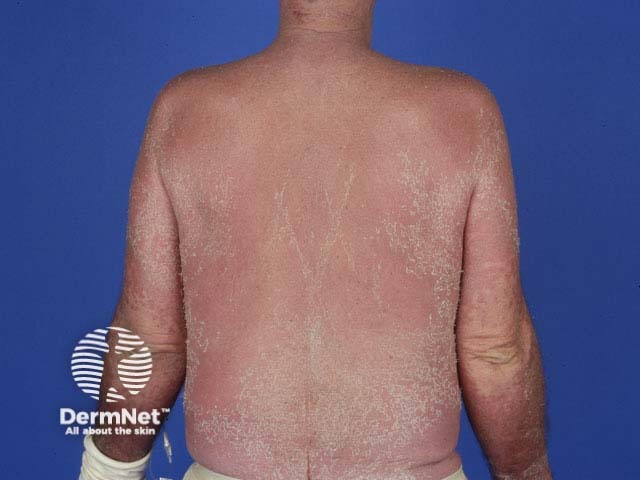Main menu
Common skin conditions

NEWS
Join DermNet PRO
Read more
Quick links
Cutaneous adverse reactions to medications are common; many are non-immunological in nature. This quiz considers some drug eruptions believed to be immunologically-mediated ('drug allergy'), or that are at least idiosyncratic in nature.
Often it is difficult to be certain whether a rash is due to drug, a skin disease or an underlying illness. A careful drug history is essential, considering prescription and over-the-counter medicines, topical agents, herbal remedies and supplements. Previous exposure, dose, duration and frequency of drug administration should be established. Refer to standard textbooks and obtain specialist advice from a dermatologist as necessary.
For each of the ten cases, study the image(s) and then answer the questions. You can click on the image to view a larger version if required.
Each case should take approximately 2 minutes to complete. There is a list of suggested further reading material at the end of the quiz.
When you finish the quiz, you can download a certificate.

Name this skin condition.
Acute generalised exanthematous pustulosis (AGEP) provoked by minocycline
What are its clinical features?
Acute generalised exanthematosis pustulosis (AGEP) presents with fever and a widespread pustular rash. Marked neutrophilic and eosinophilic leukocytosis may be observed. Despite this, the patient is often quite well systemically. The rash tends to consist of tiny scarlatiniform or larger morbilliform macules with 1-5 mm very superficial (subcorneal) white or yellow sterile pustules. Within a few days these peel off and the rash resolves in about 10 days. Some affected patients have a history of psoriasis.
List drugs that are commonly responsible.
The most common causes are beta-lactam antibiotics, other antibiotics, anti-inflammatory agents, paracetamol, thiazides, calcium channel blockers but many other drugs have been reported as well.